- Home
- H A CULLEY
The Bastard's Son
The Bastard's Son Read online
THE BASTARD’S SON
By
H A Culley
Book Five of the Normans Series
The continuing story of Hugo de Cuille
Published by Orchard House Publishing
First Kindle Edition 2016
Text copyright © 2016 H A Culley
The author asserts the moral right under the Copyright, Designs and Patents Act 1988 to be identified as the author of this work.
All Rights Reserved. This book may not be reproduced in any form, in whole or in part, without written permission from the author.
This Book is dedicated to Aliina Thurlow Karolina Culley
This novel follows on chronologically from Book 1 of the Normans Series – The Bastard’s Crown. It is set during the period when William Rufus was King of England from September 1087 to August 1100 and the early reign of King Henry I. It therefore fits timewise between the first book and the second – England in Anarchy. However it was written later than the first four books and is therefore listed as Book Five of the series.
Cover Image: The cover image was obtained from the Putty & Paint website (artist Jason Zhou). All reasonable efforts have been made by the author and publisher to verify the copyright of this image but it is believed that none exists. In the event that the publisher or the author is notified of any mistakes or omissions by the copyright owner after publication the author and publisher will endeavour to rectify the position as soon as possible.
TABLE OF CONTENTS
Author’s Note
List of Principal Characters
Chapter One – The King is Dead, Long Live the King
Chapter Two – The Calm before the Storm
Chapter Three – The Great Revolt
Chapter Four – Into Northumberland
Chapter Five – Harbottle
Chapter Six – Redesdale
Chapter Eight – Canmore’s Invasion
Chapter Nine – The Battle for Cumbria
Chapter Ten – The Year of the Grim Reaper
Chapter Eleven – The Great Conspiracy
Chapter Twelve – The Last Earl of Northumbria
Chapter Thirteen – Duke of Normandy
Chapter Fourteen – The Invasion of Scotland
Chapter Fifteen – Scotland and Normandy
Chapter Sixteen – An Uneasy Peace
Chapter Seventeen - Death in the Forest
Epilogue
About the Author
Author’s Note
This historical novel is set in the 11th Century and covers the years 1087 to 1100 A.D. when William the Second, nicknamed Rufus on account of his florid complexion, was on the throne of England. It tells the story of the events that followed the death of William the Conqueror, also called William the Bastard, the mysterious death of William Rufus in the New Forest and the immediate aftermath.
As is the case with the rest of the Normans series, the main characters are Hugo de Cuille, a fictitious knight who originated from Cuille in the County of Maine in France, and his family. However, most of the other characters are historical.
William Rufus was the third son of William I and was selected by his father to succeed to the throne of England in preference to his eldest brother, Robert Curthose, who had to make do with the consolation prize of the Duchy of Normandy. The second son, Richard, had died in 1075, strangely also in the New Forest like Rufus. The fourth son, Henry Beauclerc, succeeded William Rufus as king and was part of the hunting party when his brother was killed.
William the Second was a short, thickset, corpulent man with a ruddy complexion. His character is full of contradictions. He is described by his contemporaries as having a complex temperament, capable of both flamboyance and bellicosity. He was cynical, vain, capricious and ill-tempered. He was noted for his blasphemy and scoffed at religion. He emerges then as a somewhat boorish soldier without natural dignity or any social graces, impious and immoral, he is accused of indulging in every kind of vice and was apparently a lustful man who particularly enjoyed sodomy. Certainly he never married, nor did he produce any bastards so, if piety wasn’t the reason for this, it may well be that he preferred to bed men and boys.
On the other hand he is regarded by others as being brave, a just, if avaricious, ruler and a victorious general. He brought a lasting peace to both England, bringing his rebellious barons to heel twice, and to Normandy. He expanded the territory left to him by his father by subjugating the Scots and incorporating Cumbria into England. He established castles along the Welsh Marches and recovered Maine, the county between Normandy and Anjou which had been won and then lost by his father.
It therefore seems that William was a strong character, politically astute and a good commander in the field. His personal morals reportedly scandalised people at the time and his relations with the Church were poor most of the time. However, there is little evidence of his supposed homosexuality apart from the condemnation of certain members of the clergy. It is equally possible that he was asexual, having little interest in carnal activity of any type. Whatever the truth about his morals, he seems to have been a much better choice as king than his elder brother, who thoroughly mismanaged the Duchy of Normandy during the time that he ruled there.
Whilst there will always be controversy over his death, the mere fact that those with him fled, leaving his body for peasants to recover, seems to me to add weight to the assassination theory. As to who might have arranged for the supposed accident, the person who gained most was his younger brother, Henry Beauclerc, who deserted his dead brother as soon as he heard of his death and rode immediately to Winchester to seize the royal treasury. He made no provision for the recovery of his brother’s remains and no arrangements for his funeral. On the very next day he had himself acknowledged as king before his eldest brother, Robert, had even heard about William’s demise. It does seem as if Henry was well prepared to seize the moment, almost as if he was expecting William’s sudden death.
If he wasn’t a party to the plot to assassinate his brother, he certainly acted as if he was.
There are certain words which might be unfamiliar to the reader. I list a few of these below:
Aulant - a breed of large, short coated hunting dog used for keeping a boar at bay.
Bailiff - an administrative official. In a manor he represented the peasants to the lord, oversaw the lands and buildings of the manor, collected fines and rents, and managed the income and expenses of the manor. Bailiffs were normally from the village and were free men, that is not villeins or bondsmen.
Baldric - a belt, usually made of leather, worn over the shoulder to carry a sword in its sheath.
Baron – a title introduced into England by William the Conqueror. It referred to a man holding land directly from the king. They were also referred to as tenants-in-chief. Initially the term baron was ill-defined and not all tenants-in-chief were regarded as barons. Some held only a few manors; others, like Guillaume Peverel, held well over a hundred. Gradually the term came to mean those who held a sufficient number of manors and who were entitled to attend the king’s Great Council.
Bondsman - a man who is owned by someone else; a slave. The lowest class in Anglo-Saxon and Norman society. Bondsmen worked for the lord of the manor in exchange for food and shelter and other basics of life.
Braies - a type of trousers generally reaching to the knees or mid-calf. They could be made of leather, wool, cotton or linen. Later they became briefer and were worn as undergarments beneath hose.
Churl - a free commoner in the Anglo-Saxon hierarchy, ranking above a villein and below a thane or lord of a manor.
Conroy - a troop of cavalry, usually knights.
Constable - person in charge of a castle in the absence of its lord. In pa
rticular, he was responsible for its defence.
Courser - the courser was more common as a war horse than the destrier and preferred by some as they were lighter and faster whilst still being quite strong. They were valuable horses, but less expensive than the highly-prized destrier.
Destrier - the finest and strongest type of warhorse. These horses were usually stallions, bred and raised from a foal specifically for use in war. They were comparatively expensive.
Gambeson - a heavily quilted coat worn under the outer defence of chain mail to prevent it from chafing, or else worn on its own where it gave some protection from cuts and arrows.
Great Council - after the Norman Conquest the Great Council replaced the Witan. It was attended by earls, barons, bishops and abbots to gain their approval of the king’s decisions, especially regarding taxation, and to announce royal appointments. It was the predecessor of Parliament.
Hauberk – a shirt of chain mail. It usually reached the knees with a slit front and back to allow the wearer to ride a horse. The sleeves came down to the elbow.
Jennet - a smooth-gaited type of horse known for its presence, style and smooth ride.
Knights’ Fee - a unit of land deemed sufficient to support a knight. Of necessity, it would not only provide sustenance for himself, his family, squires and servants, but also the means to furnish himself and his retinue with horses and armour to fight for his overlord in battle.
Mainard - inhabitant of the French county of Maine.
Mesnie - French term for the military household of a noble.
Palfrey - the most expensive and highly-bred type of riding horse during the Middle Ages, sometimes equalling the knight's destrier in price. Consequently it was popular with nobles, ladies and highly-ranking knights for riding, hunting and ceremonial use.
Pallium - a woollen vestment conferred by the Pope on an archbishop, consisting of a narrow circular band placed round the shoulders with a short lappet hanging from front and back.
Quintain - a device used to train a squire in the effective use of the lance. It consisted of a shield and dummy which suspended from a swinging pole. When the shield was hit by a charging squire’s lance the whole apparatus would rotate. The squire's task was to avoid the rotating arms and not get knocked from the saddle by the heavy sandbag on the other end of the pole.
Reeve - the man who was elected annually by the villagers to supervise their work for the lord of the manor.
Rouncey - an ordinary, all-purpose horse. They were used for riding, but could also be trained for war. It was not unknown for them to be used as pack horses.
Scrivener - a senior administrative appointment with responsibility for other clerical staff. Scriveners later developed into public servants, accountants and lawyers
Scutage – normally a tenant held his manor in return for providing knights and soldiers for military service to their overlord for a period each year. Manors were assessed in terms of so many knight’s fees. However, tenants could buy out of this service by paying a fee in lieu, called scutage.
Serf - an agricultural labourer who was tied to working on his lord's estate under the feudal system. The term applied to both bondsmen and villeins.
Shatranj – an ancient form of chess that originated in Persia. Modern chess gradually developed from this game.
Shire Reeve - a royal official responsible for maintaining law and order throughout a shire or county. Later corrupted to ‘sheriff.’
Spitboy – a menial kitchen servant, usually a boy, whose job it was to turn the metal rod above a hot fire slowly to cook the meat on the spit evenly and without allowing it to burn. Also called a spit jack.
Steward - a man who supervised both a noble’s estate and his household. Stewards to great nobles, like earls, were often knights.
Tenant – a man holding land directly from a noble. Those who held it directly from the king were called tenants - in - chief.
Villein - a feudal tenant entirely subject to a lord or manor to whom he paid dues and services in return for land. Socially villeins ranked between churls (Saxon) or freemen (Norman) and bondsmen.
List of Principal Characters
In alphabetical order
Historical characters are shown in bold type
ADELINA OF LANCASTER – Guillaume Peverel’s wife.
ALAIN – Knight in Hugo’s mesnie, later its captain.
ANSELM OF BEC – Archbishop of Canterbury from 1093 – 1109.
BALDWIN FITZWARREN – Member, later captain of the mesnie of Hugo de Cuille.
CLOVIS – A knight; member of Hugo’s mesnie.
COLBY – A spitboy; bastard son of the Bailiff of Belsay. Later servant to Hugo de Cuille.
DONALD III – Known as Donald Bane. King of Scots from 1093–1094 and 1094–1097. Brother of Malcolm Canmore, he succeeded to the throne on his brother’s death but was deposed briefly by his nephew, Duncan II before he was deposed in turn by Etgair mac Mael Cholium, another son of Malcolm Canmore. He was reportedly blinded by him and imprisoned for the rest of his life.
DUNCAN II - Son of Malcolm III (Malcolm Canmore) and his first wife Ingibiorg Finnsdottir. King of Scots in 1094, he was deposed by his uncle Donald III (Donald Bane) and later killed in battle.
EDGAR THE AETHELING – Saxon heir to the English throne who was later reconciled with King William I. Led the English army who placed King Etgair mac Mael Cholium on the throne of Scotland.
EDMUND – Brother of Duncan II and Etgair mac Mael Cholium. Nephew of Donald Bane.
EDWARD DE CUILLE – Richard de Cuille’s younger brother and heir. Hugo’s half-brother.
EDWIN – Oswin’s younger son and later squire to Hugo de Cuille.
ETGAIR MAC MAEL CHOLIUM – King of Scots from 1097 to 1107.
GODRIC – Son of Carsten, a Northumbrian churl.
GILBERT OF CUILLE - Boyhood friend of Hugo. One of the commissioners of the Doomsday Book and chief scrivener to the king.
GUILLAUME PEVEREL - Norman baron and Sheriff of both Nottinghamshire and Derbyshire. Very probably the illegitimate son of William the Conqueror.
HENRY BEAUCLERC – Youngest son of King William I (William the Conqueror - known in his own time as William the Bastard).
HERBERT FITZGILBERT – Son of Gilbert of Cuille. Hugo’s steward.
HIERRU – Daughter of Fulk le Ferroce and later wife of Tristan de Cuille.
HUGO DE CUILLE – Knight holding manors in Derbyshire and Northumberland.
IVO DE VESCI – Succeeded his father as lord of Alnwick.
JUSTIN GIFFARD – Page to William Rufus; later second squire to Sir Hugo.
LANFRANC – Archbishop of Canterbury from 1070 to 1089. Tutor to William Rufus as a boy.
LEOFRIC – Oswin’s eldest son and heir.
MOREL OF BAMBURGH – Sheriff of Northumberland.
OSKAR – Squire to Sir Hugo.
OSWIN OF BURNEHAM – Saxon friend and brother-in-law of Hugo’s. Knight in his mesnie. Later lord of the manor of Peak’s Cavern.
PETER – Squire to Sir Clovis.
RALPH – Knight in Hugo’s mesnie.
RANULPH FLAMBARD – Treasurer of England and Keeper of the King’s Seal. Prince-Bishop of Durham 1099 – 1128.
RICHARD DE CUILLE – Hugo’s half-brother and lord of the manor of Cuille in Maine.
ROBERT CURTHOSE – Duke of Normandy. Eldest son of King William I of England.
ROBERT DE CUILLE – Twin son of Hugo. Squire to Guillaume Peverel.
ROBERT DE BELLÊME - Son of Roger de Montgomerie, Earl of Shrewsbury. Former enemy of Hugo’s and a supporter of Robert Curthose’s claim to the throne of England after the death of William I.
ROBERT DE MOWBRAY – Earl of Northumbria.
ROLAND – Captain of Hugo’s Mesnie before he was made lord of the manor of Hathersage.
SIMON – Squire to Sir Hugo at the start of William Rufus’ reign.
SWEYN – A Saxon boy captured by Hugo during the Conquest, now a knight in his
mesnie.
TRISTAN DE CUILLE - Twin son of Hugo. Squire to Yves de Vesci of Alnwick.
WALTER GIFFARD – The first Earl of Buckingham. One of Rufus’ closest advisors. Father of Justin.
WILLIAM DE St. CALAIS – Prince-Bishop of Durham 1080 - 1088 and from 1091 – 1096.
WILLIAM PEVEREL – Elder son of Guillaume Peverel.
WILLIAM RUFUS – Son of King William I. King of England 1087 – 1100.
WULFRIC OF BURNEHAM - Oswin’s younger brother, knight in Hugo’s mesnie.
YVES DE VESCI – Lord of Alnwick in Northumberland.
Chapter One – The King is Dead, Long Live the King
Autumn 1087
The stag raised its head, nose quivering and sniffed the air. Suddenly, scenting both dogs and humans, it turned and fled into the trees at the base of the steep climb up to the plateau above the Derbyshire village of Edale. The village and the surrounding land formed one of the manors held by Hugo de Cuille. Now forty three, he was still a handsome man who looked younger than his years. His short fair hair was beginning to turn slightly grey at the temples and crows’ feet were just discernible at the edges of his eyes, but the rest of his face was relatively unmarked by wrinkles.
He was the organiser of the hunt, although the title of Royal Warden of the High Peak, and therefore the right to hunt on the king’s personal hunting grounds, belonged to one of his guests, Guillaume Peverel. Although he was only a few years older than Hugo, he looked his much more his age. At forty seven he was beginning to find his muscles tired more quickly than they used to and he knew that he would quickly stiffen up when he rested after the hunt. The third member of the party, apart from the huntsmen and the dog handlers, was Adelina of Lancaster, Guillaume’s wife. She was a handsome woman, rather than a pretty one, who was fourteen years younger than her husband. She had already presented him with two daughters, now aged twelve and four, and two sons – William and Henry who were eight and six respectively.

 The Wolf and the Raven
The Wolf and the Raven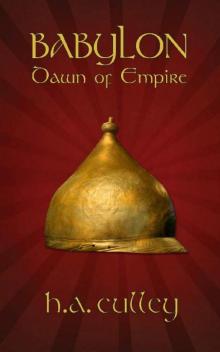 Dawn of Empire
Dawn of Empire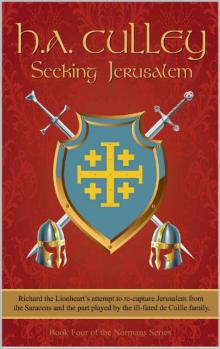 Seeking Jerusalem
Seeking Jerusalem The Strategos
The Strategos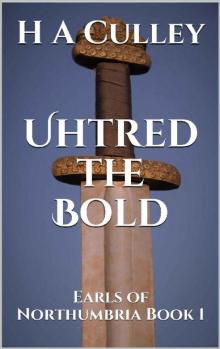 Uhtred the Bold
Uhtred the Bold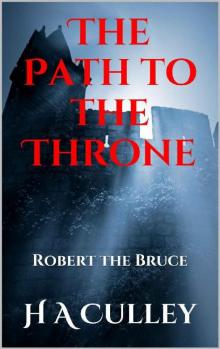 The Path to the Throne
The Path to the Throne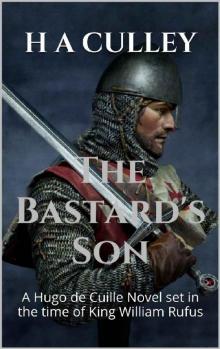 The Bastard's Son
The Bastard's Son Alexander
Alexander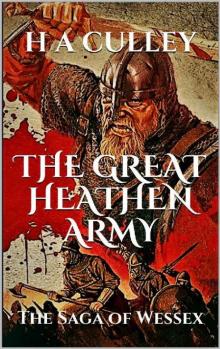 The Great Heathen Army
The Great Heathen Army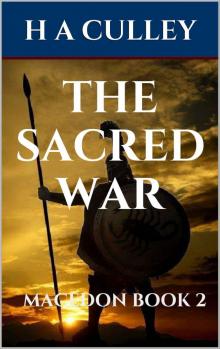 The Sacred War
The Sacred War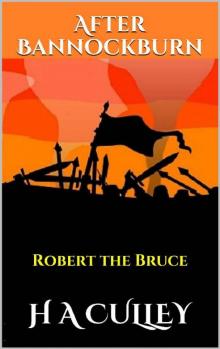 After Bannockburn
After Bannockburn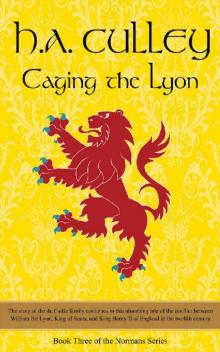 Caging the Lyon
Caging the Lyon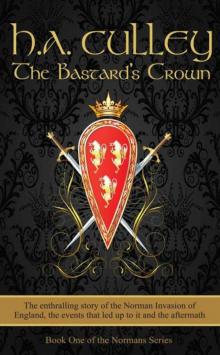 The Bastard's Crown
The Bastard's Crown WHITEBLADE
WHITEBLADE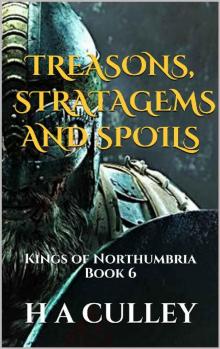 TREASONS, STRATAGEMS AND SPOILS: Kings of Northumbria Book 6
TREASONS, STRATAGEMS AND SPOILS: Kings of Northumbria Book 6 THE POWER AND THE GLORY: Kings of Northumbria Book 4
THE POWER AND THE GLORY: Kings of Northumbria Book 4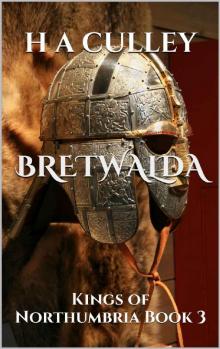 BRETWALDA: Kings of Northumbria Book 3
BRETWALDA: Kings of Northumbria Book 3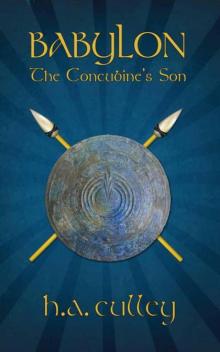 The Concubine's Son
The Concubine's Son The Fall of the House of Æthelfrith: Kings of Northumbria Book 5
The Fall of the House of Æthelfrith: Kings of Northumbria Book 5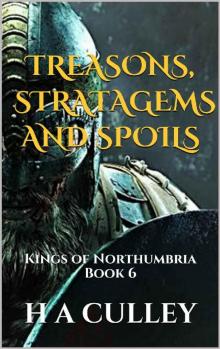 TREASONS, STRATAGEMS AND SPOILS
TREASONS, STRATAGEMS AND SPOILS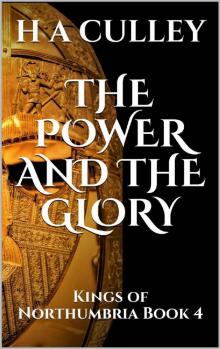 THE POWER AND THE GLORY
THE POWER AND THE GLORY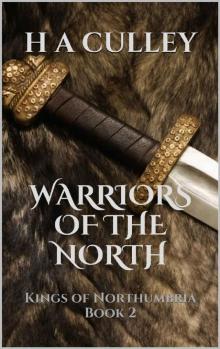 WARRIORS OF THE NORTH
WARRIORS OF THE NORTH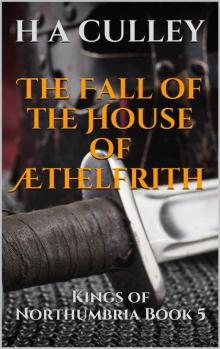 The Fall of the House of Æthelfrith
The Fall of the House of Æthelfrith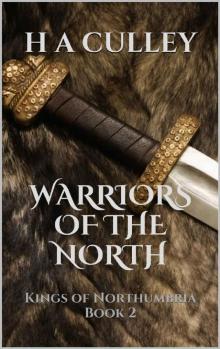 WARRIORS OF THE NORTH: Kings of Northumbria Book 2
WARRIORS OF THE NORTH: Kings of Northumbria Book 2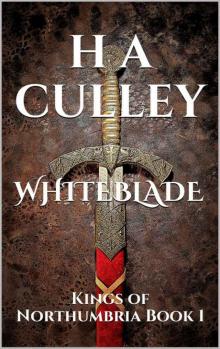 WHITEBLADE: Kings of Northumbria Book 1
WHITEBLADE: Kings of Northumbria Book 1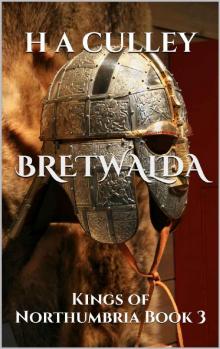 BRETWALDA
BRETWALDA